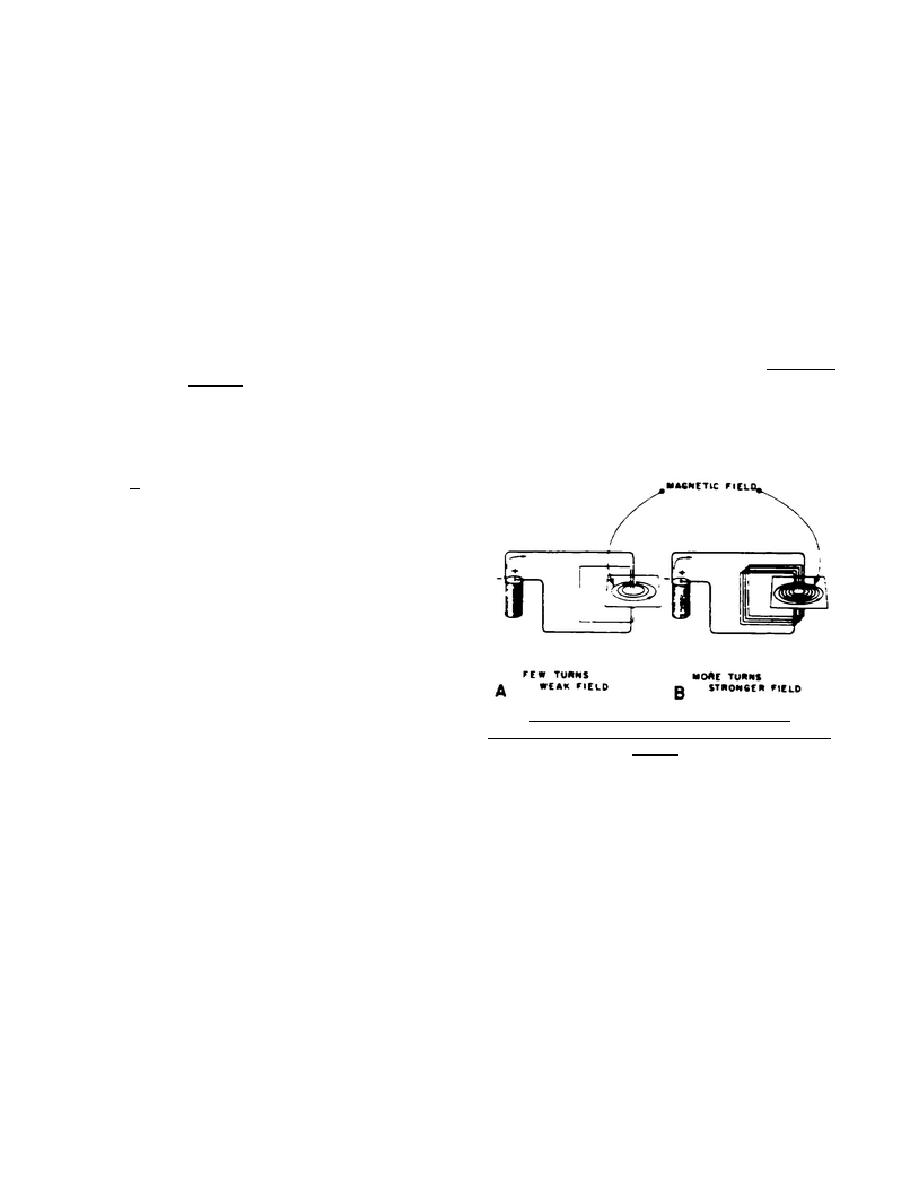
(1) The direction of current determines the path the lines of force take in
encircling the wire. The compass indicates the direction of the lines
of force.
(2) The concentration of lines of force (flux density) in the space
surrounding the wire is proportional to the strength of the current
flow. The greater the current, the greater is the flux density.
(3) A reversal in the direction of current flow causes a reversal in the
direction of the lines of force.
In B of figure 13, the compass
reflects the change that takes place.
(4) When, for any reason, the current decreases, the lines of force
"collapse" toward the wire. The number of lines of force remaining is
proportional to the remaining current flow.
If the current drops to
zero, the lines of force will disappear. The rate at which the lines
of force build up or collapse is determined primarily by the rate of
change of current in the wire.
(5) Unless energy in the magnetic field is absorbed by another circuit,
when current flow ceases all the energy set up in the magnetic field
returns to the circuit that originally set up the field.
b. The magnetic field produced
by current flowing in a single loop of
wire is very weak.
If two loops are
made in the conductor, the lines of
force will circle the two loops (A of
fig. 14).
The magnetic field will be
twice as strong as with one loop since
the lines of force of the two loops
combine.
(1) If
a
still
stronger
magnetic field is desired,
additional turns can be
added to the coil of wire.
Figure 14. Adding more loops
The lines of force show a
increases the strength of the magnetic
greater concentration in
field.
the magnetic field shown
in B of figure 14.
(2) By placing a magnetic substance such as iron or steel in the center of
the coil, the number of lines of force can be concentrated into a
smaller area.
This condition comes about because there is less
opposition to magnetic lines of force in magnetic materials than in
air.
(3) The magnetic flux can also be conveniently controlled by varying the
amount of current flowing through the wire. One measure of the holding
power of an electromagnet is the number of ampere turns (number of
amperes multiplied by number of turns).
308
17


 Previous Page
Previous Page
